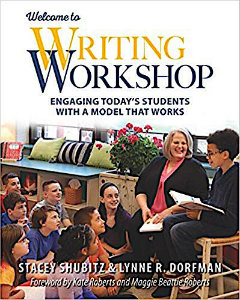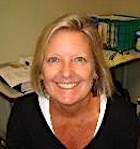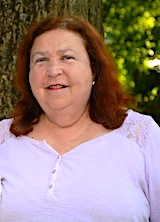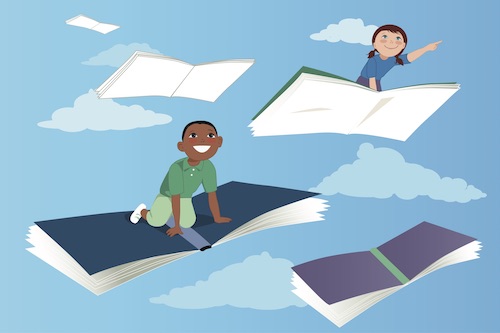Growing Your Expertise in Children’s Literature
By Lynne Dorfman & Brenda Krupp
Frank Smith reminds us that the role of a teacher is to facilitate and promote the admission of children to the “literacy club” by creating a classroom where meaningful and useful reading and writing activities abound and participation is accessible for all. (Joining the Literacy Club, Heinemann, 1988)
Smith’s one caveat: Every teacher should also be a member of the club. To become a children’s literature expert, we must lead a readerly life – not just during summer months when we might get to read for pleasure on beaches and in cabins by the lake – but throughout the year.
Learning about lots of books your students might enjoy is not an easy task, given the many duties teachers perform. So how can we find the time to become a children’s literature expert?
We know that one of the ways we can help our students become lifelong readers is to provide choice and book titles that are engaging. It’s essential to offer a wide variety of genres and authors housed within our classroom collection for quick and easy access.
But perhaps the most important factor is the teacher — more specifically, the teacher as reader. To become a children’s literature expert, teachers need to read widely and make sure they are familiar with current publications, new authors, series books, magazines, and genres we do not usually tackle ourselves.
Sometimes teachers are the only role models
In Literacy Essentials: Engagement, Excellence, and Equity for All Learners, Regie Routman writes about the importance of being exemplars for the reading life because we may be the only reading role models some of our students have. (Stenhouse, 2018, p.195)
Routman advises us to begin or renew our readerly life and that it is never too late. In our classrooms we need to share what we read outside the classroom walls and demonstrate our own reading processes – the strategies and skills that good readers rely on to make sense of a text and to deepen their understanding and appreciation of the author’s craft.
When we examine our own practices, we can start to understand the complexity of the reading process and the reading difficulties our students may encounter. Only then can we begin to appreciate the hard work our students do every day to grow as readers.
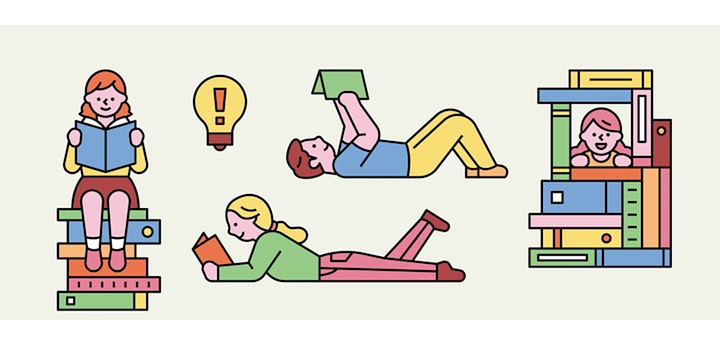
We have to read the books ourselves
It’s our job to read the books we are adding to our classroom library and our recommended lists. Reading the back cover blurb or a description in a catalogue is not enough. Here are some things we can do to grow as readers of children’s literature:
- Don’t always play it safe. Take risks and try new authors and genres such as young adult literature, a graphic novel, a play, a collection of poems or essays so you can help your students take risks, too.
- Ask your librarian. Your school librarian can recommend new book titles. Invite your local community librarian to your classroom or school for an assembly program or Skype with them on what’s new in their library.
- Skype or Zoom with children’s authors. Visit author Kate Messner’s page to discover many children and YA authors who will interact online with students who have read their books.
- What I’m Reading. Place a poster outside your door that includes what you are reading as a read aloud to your class and what you are reading outside of school. Laminate it so you can write in erasable markers and continue to change it up as you read throughout the school year. Sharing personal reading lists is a great practice for all the teachers in your school. Teachers read!
- Set a new reading goal for yourself. Share with your grade level team. Lynne’s goal for 2020 was to start each day with some reading. To that end, she has a stack of books she can always depend on for a quick five to fifteen-minute read each morning. Here are some of her choices: Flying Lessons and Other Stories edited by Ellen Oh; Garden Poems selected and edited by John Hollander; an article from Ed Leadership (ASCD) or Kappan; Natural Meditation: Refreshing Your Spirit Through Nature by Barbara Ann Kipfer; Twist: Yoga Poems by Janet Wong, and Start with Joy: Designing Literacy Learning for Student Happiness by Katie Egan Cunningham.
- Read magazines, newspapers, journals and blogs to find books that are award winners and/or are used by teachers in interesting ways. ILA’s Teaching Books and the School Library Journal are good sources, as are teacher book review blogs like these by MiddleWeb contributors Katie Caprino and Kathleen Palmieri.
- Be a reader of books you can use in your teaching across content areas: wordless books, picture books, early chapter books, upper elementary/middle school novels, YA literature, poetry, essays, plays, and nonfiction science, history, bios and more.
- Try listening to children’s books while you are in the car or doing chores at home. Audiobooks are on the rise!
- Establish a Goodreads account and follow others with shared interests.
- Review and recommend children and YA lit on Amazon.
- Look/ask for recommendations on Twitter, Instagram, Pinterest and in articles like these by Kasey Short and others at MiddleWeb.
- Keep a reader’s notebook/log to write something you want to remember about the children’s books you are reading.
- Share. Email or text a friend and colleague to recommend a book to them.
- Suggest a place in the school (perhaps a special shelf in the librarian’s office or in the copy room or in the teachers’ lounge) where your colleagues can place children’s books they’ve read so teachers can borrow to read and return when they are finished.
- Keep current. Know what new books are being published. Browse the Publishers Weekly rich selection of articles and reviews for children’s and YA books and follow @PWKidsBookShelf.
- The Nerdy Book Club. Read. Follow. Contribute!
One way to become a children’s literature expert is to find great professional reads to help you get started. Here are some of our favorites:
- Reading in the Wild by Donalyn Miller with Susan Kelley
- The Book Whisperer by Donalyn Miller
- Game Changer: Book Access for All Kids by Donalyn Miller & Colby Sharp
- The Ramped-Up Read Aloud: What to Notice When You Turn the Page by Maria P. Walther
- It’s All About the Books: How to Create Bookrooms and Classroom Libraries That Inspire Readers by Tammy Mulligan & Clare Landrigan
- The Literacy Workshop: Where Reading and Writing Converge by Maria Walther & Karen Biggs-Tucker
- No More Fake Reading: Merging the Classics with Independent Reading to Create Joyful, Lifelong Readers by Berit Gordon
- Mentor Texts, 2nd edition: Teaching Writing Through Children’s Literature, K-6 by Lynne R. Dorfman & Rose Cappelli
- Poetry Mentor Texts: Making Reading and Writing Connections, K-8 by Lynne R. Dorfman & Rose Cappelli
- Nonfiction Mentor Texts: Teaching Informational Writing Through Children’s Literature, K-8 by Lynne R. Dorfman & Rose Cappelli
- Craft Moves: Lesson Sets for Teaching Writing with Mentor Texts by Stacey Shubitz
- Jim Trelease’s Read-Aloud Handbook: Eighth Edition by Jim Trelease & Cyndi Giorgis
Another way to become a children’s literature expert is to spend time in book stores to browse and sometimes attend a presentation given by children’s author. Of course, local, state, and national conferences can lend another level to your knowledge of children’s books. They often feature an author strand, author awards luncheons and dinners, and keynotes or sessions such as an authors’ panel on diverse books.
Search out sources of information that will introduce diverse books by new and established authors. Websites such as WNDB (We Need Diverse Books) and Colorín Colorado, a bilingual site that has resources including book titles that represent a wide number of cultures and experiences, can get you started, but you will still need to do the work of actually reading the books you think you want to include in your classroom library collection.
Do you keep a log of the books you read? Join Goodreads or keep a list of what you’ve read this year. Are you seeing patterns, trends, or a lack of some genres? Try reading outside your comfort zone. Do this with your students, modeling your thinking and new reading possibilities, and encouraging readers in your class to take risks with you!
Lynne Dorfman and Brenda Krupp are co-authors of Welcome to Reading Workshop: Building a House of Readers, a new Stenhouse publication coming in 2022.
Brenda served as a classroom teacher, a lead teacher for Souderton Area School District and a co-director for the summer invitational writing institute for the PA Writing & Literature Project (now The West Chester Writing Project) for over a decade.
